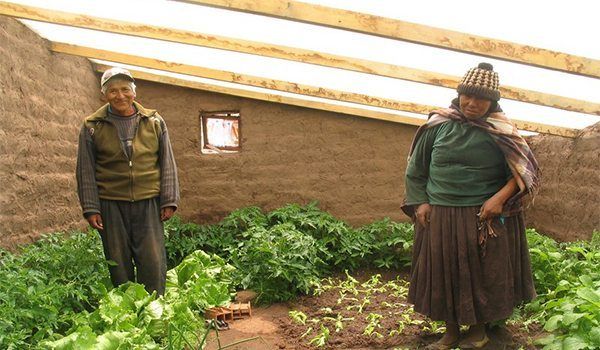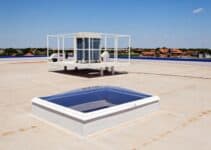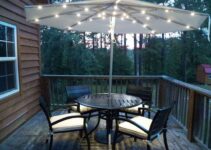The technology to capture solar energy and use it in a variety of ways is rapidly developing. It is an exciting time in the industry with large scale, efficient solar farms generating power from the sun on a massive scale. Whilst most of these large-scale developments focus on converting the suns energy into electricity, other solar devices are also being designed like the solar powered cooking grill a solar device that generates diesel from the air. In a domestic setting the capture of solar power is still limited but we can expect to see some exciting development in the future.
Greenhouses
It is worth remembering that plants capture the suns energy all the time and convert it into food in a process called photosynthesis. Our vegetable patches and gardens are therefore one big solar panel. We can capture more of this energy to extend our growing seasons and produce more food by the use of cold frames and greenhouses.
A greenhouse does not increase the suns energy or concentrate the incoming light. A patch of ground under a greenhouse does not receive more light than a neighbouring patch outside the greenhouse. So how does a greenhouse work then? Sunlight is not just light – it also carries heat energy too. When light passes through an object, like glass, some of it becomes heat. The panes of a greenhouse capture this heat energy and hold it inside the structure heating the plants and the soil around the plants roots. It is this increase in temperature that makes the plants inside a greenhouse grow earlier and faster than plants outside.
To maximise the capture of this heat energy a greenhouse needs to have tight joints and glazing so the heat and warm air inside can’t leak out. Glass is not a good insulator but modern thickened glass is more effective at retaining heat when there is no direct sunlight, for example, when there is cloud cover and during the night.
Quality greenhouse manufacturers like Cultivar use gaskets in their frames which allow the greenhouse glazing to expand when it is hot but when the glass cools and shrinks the gaskets also ensure a snug fit with no air gaps. If you have a layer of brick or stone at the base of your greenhouse this will act as a heat store – it will take longer for the greenhouse to heat up but overnight these dense materials will release their heat.
Walipini Greenhouses
The further you are away from the equator the less light you will experience in the Winter. For many of us there is not enough sunlight in the Winter to allow us to grow a crop. Of course, you can artificially heat your greenhouse – however this is not very efficient.
A Walipini greenhouse design comes from Bolivia and it has a unique design. It is a large hole (6-8 feet deep) with glazed top level and roof. This design has much less surface area of glass to capture sunlight through so how can it be warmer during the Winter? It uses a secondary source of heat – the Earths crust! The Earths crust is molten metal and magma and it’s very hot. You only have to dig down about 1.2m to benefit from this heat. At this depth the soil temperature is fairly constant at 10 – 16 °C. This steady temperature is found in most places across the globe and it even has it’s own name – The Thermal Constant.
So by digging down into the Thermal Constant layer you ensuring that your plants roots always experience a safe temperature making Winter growing a possibility. It also prevents root temperatures becoming too high in the Summer.
If you want to try this type of greenhouse you need to make sure that it’s base is a good 5 feet above your local water table. This will prevent flooding and root waterlogging.
Sunrooms
You can use the suns energy to heat your home directly. Large panes of glass, sunrooms and skylights can be added to your home to capture the suns heat and reduce or eliminate your need to use artificial heating. If you want to make sure the heat captured during the day does not escape as soon as the sun sets you will need to use quality double glazing, in freezing countries triple glazing is the best option. Without quality glazing the sun room will not be comfortable in the evenings and overnight.
You should pay close attention to the glasses Solar Heat Gain Coefficient (SHGC). This measures how well the glass converts the sunlight that falls onto it into heat. The scale runs from 0 to 1. The closer the SHGC is to 1 the better it is at generating heat from sunlight.
Fit a ceiling fan which pushes air down towards the floor. Because warm air rises the hottest temperatures will be up near the roof, a ceiling fan will make the air circulate pushing the heat down towards the furniture and people and below.
Of course you can use some clever design to combine the benefits of a sun room with a greenhouse. Several eco communities as well as research institutions are incorporating large glazed sections onto the side of living quarters to provide heat as well as a large area for year round food production. The image below is of the Sirius Community greenhouse.
Domestic Solar Power Adoption
Having solar panels fitted individually to your home can still be expensive and complicated. Some governments have helped the industry by providing grants and incentivising power companies to use domestic solar power. Other countries have done the opposite by levying taxes and imposing restrictive legislation. These two extremes are illustrated by the UK and Spain.
Despite Spain being bathed in constant sunshine, using solar power for anything other than water heating is difficult and expensive. In the UK solar panels are literally everywhere even though there is little strong sunshine for much of the year. In 2016 the UK was in 6th place globally in terms of solar capacity and was generating 12,300 MW of solar power, about 3.5% of the country’s electricity need. In comparison Spain is in 10th place in the world with a capacity of only 5,500 MW.
If you want to find out more about solar power production and usage on a country by country basis you can start here. If you can’t fit solar panels to home don’t despair there are still ways to use the suns energy.






